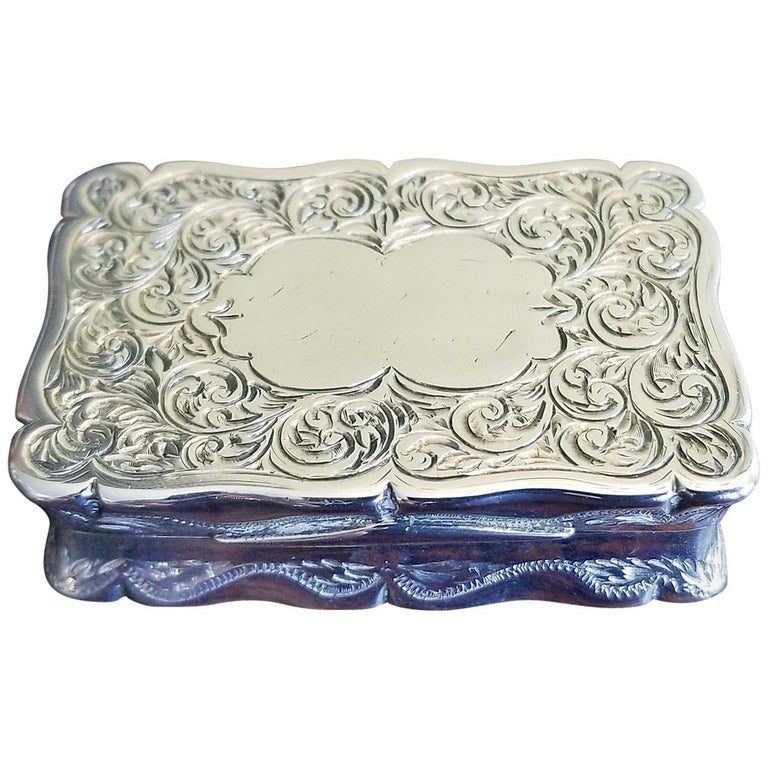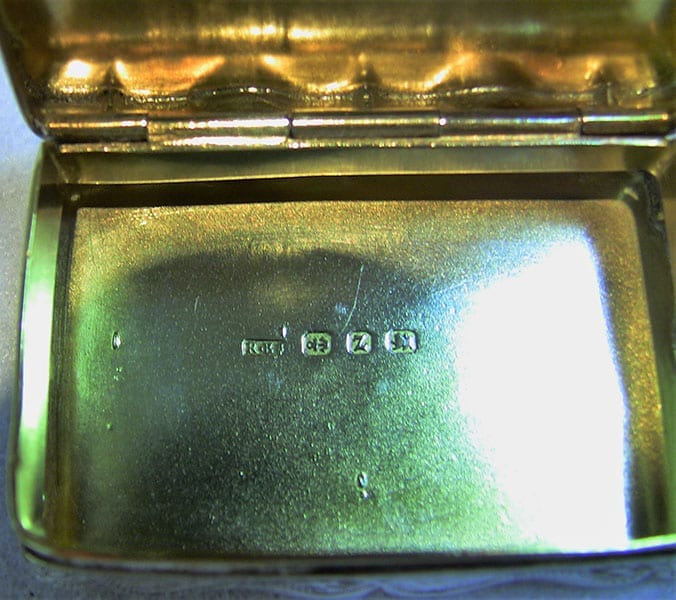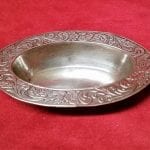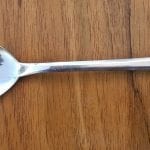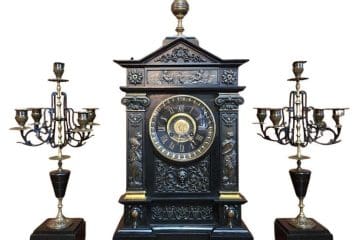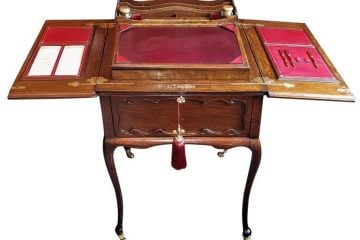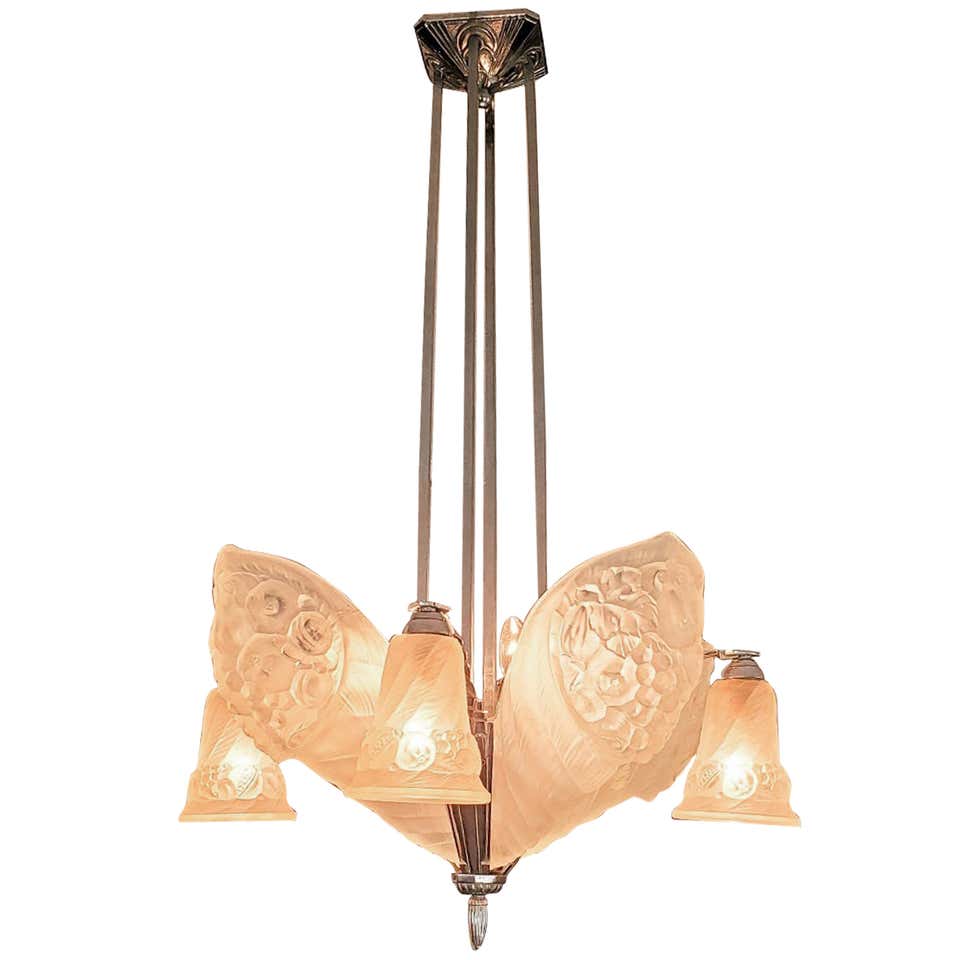19C Sterling Silver Snuffbox Birmingham 1848 by Rolason Bros
PRESENTING A LOVELY 19C Sterling Silver Snuffbox made in Birmingham in 1848 by Rolason Bros.
Lovely little sterling silver snuffbox, fully hallmarked with gold plated interior.
Lovely chasing on lid and sides. The central cartouche is blank, which is a bonus if you want to personalize it.
Both the base and lid have matching hallmarks.
Makers mark is “R.B” for Rolason Brothers, with Birmingham Anchor mark. Lion Passant Mark for 1848 (‘Z”)
HISTORY OF SNUFF BOXES:
“Inhaling snuff, or snuffing, as it is also called, was first witnessed by a European in 1493, when Friar Ramón Pane, who had arrived in the new world courtesy of Christopher Columbus, was living as a missionary among Haiti’s indigenous Taino. Until then, tobacco had been unknown to Europeans, but the use of tobacco spread like a weed on the continent during the 1500s. By the second half of the 17th century, ornate boxes were being produced to keep the precious powder dry.
At the beginning of the 18th century, French jewelers made snuff boxes out of gold set with diamonds, amethysts, and sapphires. By 1740, specialized artisans took over the production of these ornate tabatières, which they engraved, chased, and enameled. A close cousin of the tabatière was the tabatière à cage, whose sides, tops, and bottoms featured gold or metal frames holding panels of decorated ivory, agate, tortoiseshell, or porcelain.
The shapes of these boxes was not limited to simple rectangles. Porcelain containers resembling trunks were common, as were ovals, but tabatières shaped like shells were more rare. And while materials were often enough for their decoration, sometimes these snuff boxes were hand painted, depicting everything from miniature landscapes and bucolic scenes to tiny portraits or grisaille cameos of their owners.
Silver snuff boxes are usually associated with Sheffield, England, where silver-plating technologies were perfected on these diminutive containers in the late 18th century. By the early 19th century, the silver industry had blossomed in Birmingham, England, where box makers such as Samuel Pemberton, Nathaniel Mills, and Edward Smith produced oblong containers with images of castles and abbeys on their tops and sides.
Interestingly, Birmingham was also a center for papier-mâché snuff boxes, which were hardened with multiple layers of enamel. Sensing a market for these inexpensive boxes in the United States, Birmingham box makers were soon decorating their wares with portraits of U.S. naval heroes and victory scenes from the War of 1812, often using engravings by such renowned American artists as Gilbert Stuart as their primary source material.
Meanwhile, in China, snuff bottles were produced to serve the same purpose as snuff boxes in the West. These bottles often resembled flattened discs and ranged in their materials from carved glass or jade to fired porcelain. In the 1800s, some glass bottles were painted from the inside by artists using tiny brushes that ended in right-angles instead of points. Cloisonné was another favored decorative application, with copper and gold being the preferred metals to pair with the enameling.”
Link: http://www.collectorsweekly.com/tobacciana/snuff-boxes
Beautiful piece in beautiful condition.
19C Sterling Silver Snuffbox Birmingham 1848 by Rolason Bros.
Provenance: Bought Privately in the UK.
Dimensions: 2.25 in wide, 0.75 in high and 1.5 in deep
Condition: Very good original condition.
